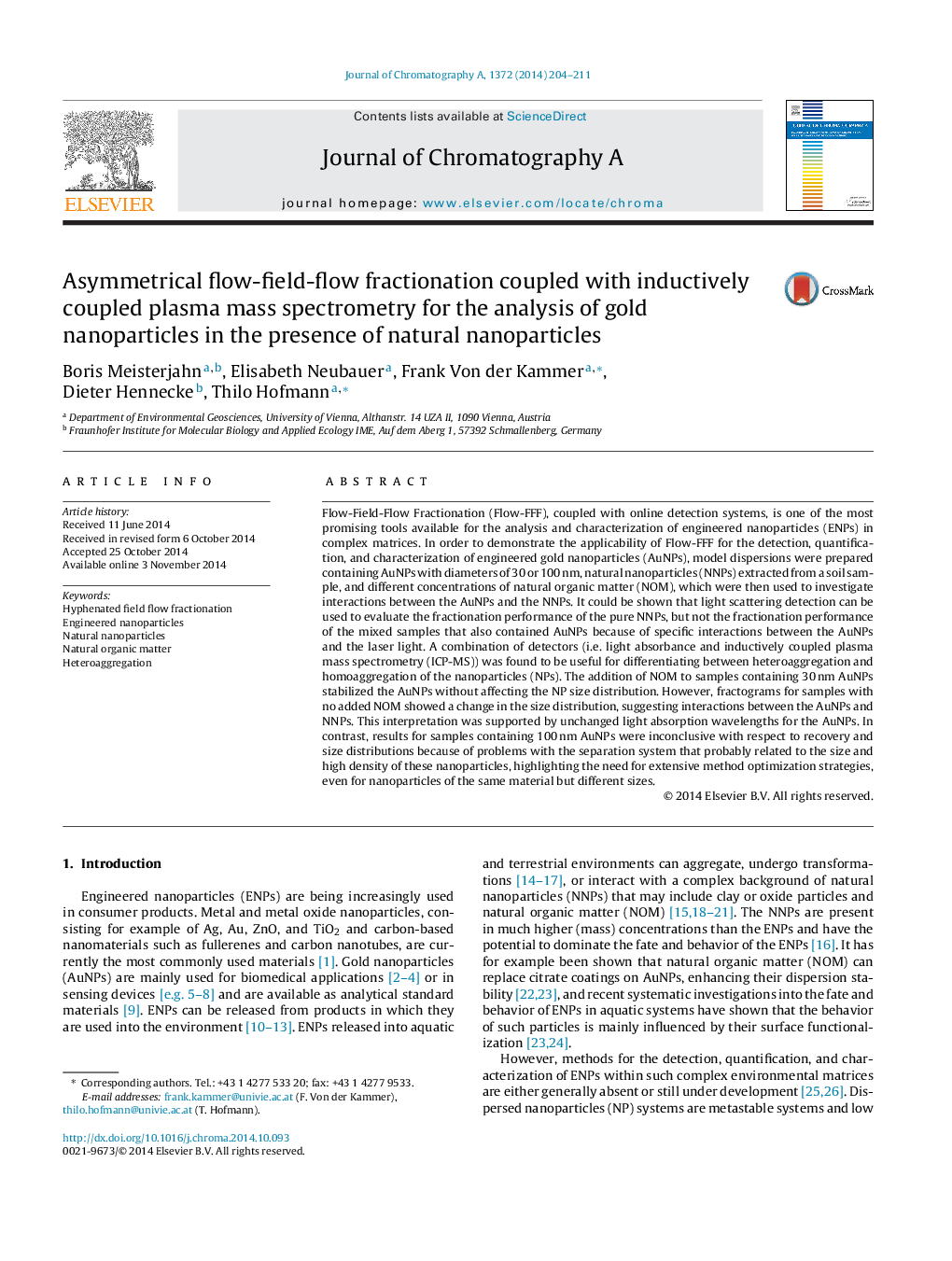| کد مقاله | کد نشریه | سال انتشار | مقاله انگلیسی | نسخه تمام متن |
|---|---|---|---|---|
| 1199595 | 1493554 | 2014 | 8 صفحه PDF | دانلود رایگان |
• Detection and quantification of engineered Au nanoparticles in a complex matrix.
• Study of interactions between engineered Au nanoparticles and natural nanoparticles.
• Hetero-aggregation does not always dominate the fate of engineered nanoparticles.
• Dispersions of natural NPs and engineered NPs can be used for fate studies.
Flow-Field-Flow Fractionation (Flow-FFF), coupled with online detection systems, is one of the most promising tools available for the analysis and characterization of engineered nanoparticles (ENPs) in complex matrices. In order to demonstrate the applicability of Flow-FFF for the detection, quantification, and characterization of engineered gold nanoparticles (AuNPs), model dispersions were prepared containing AuNPs with diameters of 30 or 100 nm, natural nanoparticles (NNPs) extracted from a soil sample, and different concentrations of natural organic matter (NOM), which were then used to investigate interactions between the AuNPs and the NNPs. It could be shown that light scattering detection can be used to evaluate the fractionation performance of the pure NNPs, but not the fractionation performance of the mixed samples that also contained AuNPs because of specific interactions between the AuNPs and the laser light. A combination of detectors (i.e. light absorbance and inductively coupled plasma mass spectrometry (ICP-MS)) was found to be useful for differentiating between heteroaggregation and homoaggregation of the nanoparticles (NPs). The addition of NOM to samples containing 30 nm AuNPs stabilized the AuNPs without affecting the NP size distribution. However, fractograms for samples with no added NOM showed a change in the size distribution, suggesting interactions between the AuNPs and NNPs. This interpretation was supported by unchanged light absorption wavelengths for the AuNPs. In contrast, results for samples containing 100 nm AuNPs were inconclusive with respect to recovery and size distributions because of problems with the separation system that probably related to the size and high density of these nanoparticles, highlighting the need for extensive method optimization strategies, even for nanoparticles of the same material but different sizes.
Journal: Journal of Chromatography A - Volume 1372, 12 December 2014, Pages 204–211
